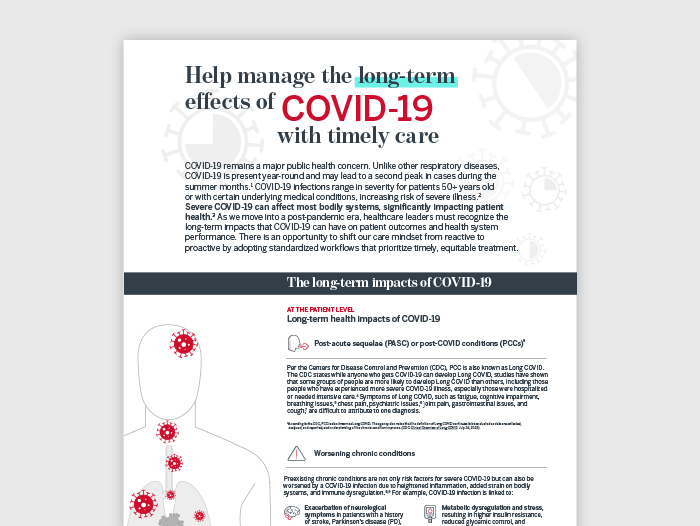Auto logout in seconds.
Continue LogoutCases of norovirus are rising in the United States, especially in the Northeast, according to recent data from CDC.
Norovirus cases rise in the US
Norovirus is the leading cause of vomiting and diarrhea and foodborne illnesses in the United States, according to CDC. The agency said people of all ages can become infected and that the virus spreads "very easily and quickly."
The virus is typically spread through direct contact with an infected person, but it can also be transmitted by consuming contaminated foods or drinks, touching surfaces with norovirus particles on them and then touching your mouth, or sharing cups or utensils with a sick person.
CDC also noted that people can contract norovirus multiple times within their lifetime as there are many different types of the virus. Becoming infected with "one type of norovirus may not protect you against other types."
Norovirus causes 19 to 21 million illnesses in the United States each year, most commonly between November and April. There are 109,000 hospitalizations every year as well as 900 deaths, most commonly among older adults, CDC said.
According to the agency, the three-week average of positive tests for norovirus in the Northeast hit 13.9% in recent weeks and has remained above 10% since the middle of December 2023.
CDC also noted the South has seen rates at 9.5%, the Midwest has floated around 10%, and the West has seen rates around 12%.
While the numbers are concerning, the current surge in norovirus cases is common for this time of year, according to Thomas Russo, professor and chief of infectious disease at the University of Buffalo. You can be infected with the norovirus any time of the year, but it's most common in the cooler months. "It's usually a November to April illness, but it often tends to peak in January," Russo said.
The contagiousness of norovirus paired with people being in close quarters during the winter months is typically what drives surges in cases. "Social interaction of any sort is going to bring you into contact with people that have this," said Amesh Adalja, an infectious disease expert and senior scholar at the Johns Hopkins Center for Health Security.
How to protect yourself
According to Russo, while the norovirus is "pretty much everywhere right now," it likely won't be that way for much longer.
It's impossible to predict what will happen, but William Schaffner, an infectious disease specialist and professor at the Vanderbilt University School of Medicine, said rising temperatures across the United States as springtime approaches could help slow the spread of the virus. "Could it be that this will be limited to the Northeast as the temperature warms up in much of the rest of the country? We hope so," he said.
Until then, CDC says the best way to protect yourself is washing your hands well with soap and water, cleaning and disinfecting surfaces with bleach, and washing laundry with hot water.
According to Adalja, the best way to avoid getting sick is practicing proper hygiene. "Meticulously wash your hands," he said, adding that you may want to avoid eating at restaurants if cases are especially high in your area, as the virus is commonly passed around by food service workers.
If someone in your house is sick, Schaffner said to thoroughly clean contaminated surfaces as well as frequently touched surfaces like doorknobs and remote controls.
It's also important to note that norovirus can survive many standard cleaning materials. According to Forbes, you should specifically clean surfaces with a chlorine bleach concentration of 1,000 to 5,000 parts per million or another kind of disinfecting product registered with the Environmental Protection Agency as being effective against norovirus.
Russo added that wearing a mask and gloves while taking care of a sick person may also help protect you from getting sick.
If you do happen to get sick, it's important to stay hydrated though taking small sips of water or a sports drink, Russo said. If you lose too many fluids from vomiting or diarrhea, you might become dehydrated and need intravenous fluids.
If you're sick, you should also be washing your hands frequently. People who have already been sick should also note that they can continue spreading the virus for up to two weeks after they start feeling better, Health reports. And sick people should avoid closely interacting with others for at least 48 hours after symptoms stop.
Schaffner also noted that, while most people recover from norovirus after a few "days of misery," it's important to remember it can still cause serious illness or death in very young children or the elderly. (Irwin, The Hill, 2/22; Miller, Health, 2/24; Lee, Forbes, 2/24)
Writing for the New York Times, Dana Smith outlines everything you need to know about eight common illnesses, including how long you're contagious with them.
Don't miss out on the latest Advisory Board insights
Create your free account to access 1 resource, including the latest research and webinars.
Want access without creating an account?
You have 1 free members-only resource remaining this month.
1 free members-only resources remaining
1 free members-only resources remaining
You've reached your limit of free insights
Become a member to access all of Advisory Board's resources, events, and experts
Never miss out on the latest innovative health care content tailored to you.
Benefits include:
You've reached your limit of free insights
Become a member to access all of Advisory Board's resources, events, and experts
Never miss out on the latest innovative health care content tailored to you.
Benefits include:
This content is available through your Curated Research partnership with Advisory Board. Click on ‘view this resource’ to read the full piece
Email ask@advisory.com to learn more
Click on ‘Become a Member’ to learn about the benefits of a Full-Access partnership with Advisory Board
Never miss out on the latest innovative health care content tailored to you.
Benefits Include:
This is for members only. Learn more.
Click on ‘Become a Member’ to learn about the benefits of a Full-Access partnership with Advisory Board
Never miss out on the latest innovative health care content tailored to you.


